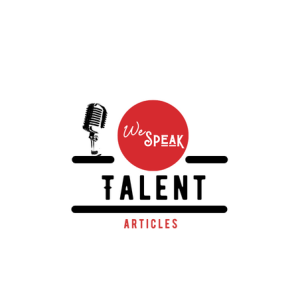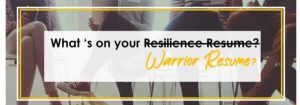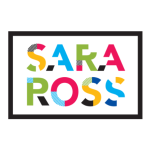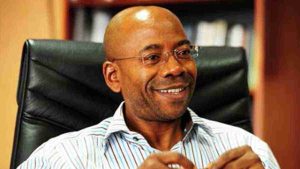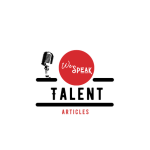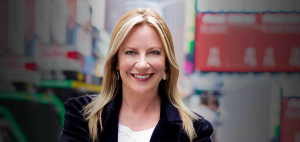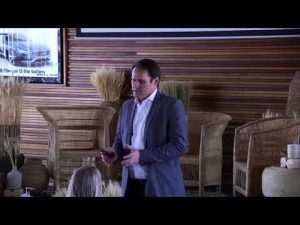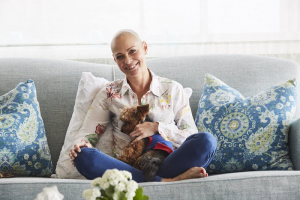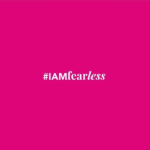- 0
- Indonesia
Author: Tyler Farnham
A parachute malfunction is probably the number one fear after jettisoning yourself from 13,000ft, right? Probably the top reason why most will never fling themselves from an open door, up in the sky. It’s something that even those experienced in the discipline know could happen, but dispel that chain of thought soon after. For surfer and skydiver Tyler Farnham, it was the furthest thing from his mind, especially as he stepped out of an aircraft for a dive he’s done many times before.
It must be difficult to imagine the fear as your equipment fails. Tyler tells MSW that he began to spiral wildly out of control, the force of which made him lose consciousness and sent him plummeting, eventually crumpling in to a field, a few metres away from a concrete path. His mother, who had jumped from the same plane shortly afterwards, descended safely and hurried to his side with paramedics soon behind.
Lucky to be alive, was Tyler’s mantra, and all docs could tell him following a five day medically induced coma and months of rehab, where his only connection to the sea was a poster of Corey Lopez, that he’d hung on the wall to get him through.
Tyler, from Cocoa Beach, Florida, was three when first pushed into an unbroken wave. “I was hooked,” he tells MSW. “Surfing kept me going after something healthy in life.”
Live cam: Cocoa Beach

During those long, land afflicted months, Tyler slowly became addicted to opioids – not a decision you make, but one he’d fall into after using them to numb the physical pain felt every day. It wasn’t until a while later that Tyler kicked ‘toxic people’ from his life, bought a one way ticket to Oz, then to Indo and has never looked back. Despite the many rungs of these experiences, Tyler remains optimistic, and draws on those life blocks as ones that helped shaped his decisions from then and define his future. Hindsight can be a sonofabitch sometimes, but there’s no reason to stop drawing from experience. Now, Tyler’s released a book called Journals from Cloud 9 that details his struggle and eventual self redemption.
We checked in with Tyler to talk his life, the accident (shattered legs, arms, skull, you name it), how surfing helped keep him on track and much more.
Tell us a bit about yourself, where did you grow up and what got you into surfing?
I grew up in Cocoa Beach Florida and my dad started pushing me into waves when I was 3-years-old, across the street from our house next to Ron Jon’s Surf Shop. It didn’t take long before I got hooked. Skating was another passion growing up in CB, considering how often the Atlantic ocean is flat. Skydiving became a part of life when I turned 18.
Obviously, Point Break influenced me as a 90’s kid.
As it does for most! And how has surfing shaped your life?
The environment I live in must have a coastline, preferably with waves. It is true that there is something about the vibe and culture in those small beach towns. From Raglan, Newquay to Byron Bay they are all similar to Cocoa Beach when it comes to surf culture and overall vibe.
Surfing kept me going after something healthy in life. Going after a feeling that only a surfer knows.
Surfing also opened up the doors to travel when my dad took me to see the movie Endless Summer 2 in 1994. I know I would not have travelled as much as I have if not for surfing. I would be a completely different human being.
And you’ve released a book Journals from Cloud 9, which details your life including a skydiving accident, addiction, surfing and more, what made you want to put pen to paper?
It all started when I was laying in that hospital bed in April of 2009. My right arm was broken at the ulna and humerus. So I picked up a pen and with my left hand, I would scribble notes about progress throughout my days. Those notes helped me stay positive and focused on day to day obstacles and achieving goals.
Once I was able to use my right hand, I would type journal entries, daily. Amazing events occurred over the following couple of years. I started surfing and skydiving again after 11 months. This was when I started volunteering with Don Ryan and Surfers for Autism. Then on my very first day back to work with my feet in the sand, myself and two other lifeguards had to resuscitate a surfer who broke his neck on a shallow sandbar, earning a lifesaving valor award.
That was the summer of 2010, and the realisation that I had some great stories to tell and decided to write my first book, Reaching Cloud 9. So that’s when the writing really began. Funny since I used to skip keyboarding class in high school to go surfing, my teacher would be proud.
Let’s back up, you were in hospital after a skydiving accident. What happened and where were you?
April 11, 2009 my mom planned her first ever skydive with me at my home dropzone, Skydive Sebastian. I had been in the sport for seven years at that point. She had a group of friends there that day all to watch, all nurses.
I made a few mistakes during my skydive. Having experienced a malfunction at a low altitude, I tried too long to correct my malfunction, thinking I could pull off a landing. I did not act fast enough and was not altitude aware throughout that last minute of being under my canopy.
By the time I realised I would not be capable of landing safely, I was too low to deploy my reserve parachute. I lost consciousness as I spiralled to the ground. My mom landed shortly after and was by my side until the helicopter flew me to the hospital. In those first hours, most people didn’t think I would survive my injuries.

What did the docs say?
After the five day medically induced coma, I woke up on my 26th birthday, April 16. The first thing the doctor told me was that they managed to save my right leg. The compound femur fracture was so bad they almost had to amputate.
He said it was like a small bomb went off in my leg, losing four inches of femur bone. My left femur broke in half, my right upper and lower arm broke in half. I had a non-operative skull fracture, my mandible broke, along with both sides of my jaw, shattered, losing nine teeth.
A concussion and lacerations to my face. This was landing in a grass field, three meters from the paved runway wearing a full face helmet. Doctors did not have anything promising or hopeful to say over the following months, except I was lucky to be alive.
How long did it take to walk, surf and move again?
I spent roughly two weeks in the hospital before being moved to a rehab centre. In the beginning I did not move unless it was for x rays, and the pain was excruciating. At my worst physically I was confined to a wheelchair and had my mouth wired shut for two months in order for my jaw to heal.
I never realised how much I loved surfing, until it was taken away from me
Pins screws and chains held my jaw in place, permanent metal rods from my hips to knees in both legs, and rods in my right arm. Beds and x-rays daily became normal for me.
My second rehab centre was slightly more promising, although I was still only taking small steps. First time I stood up, with assistance, was on Mother’s Day, May of 2009.

Were you thinking about surfing through that time?
Surfing was always on my mind. I had a poster of Cory Lopez hanging up in my rehab room for inspiration. Although I didn’t want to see or be around the beach those first weeks out of rehab, thinking Cocoa Beach would be firing. Although the reality was it was dead summer, flat.
I never realised how much I loved surfing, until it was taken away from me.
Something that people don’t seem to want to talk about but it’s important they do – during that time, you became addicted to opioids, what impact did that have on your life? And how did you pull through that?
The impact was huge. I used them in the beginning responsibly, to push through pain and train daily, in order to get my life back. But as time went on, I found myself dependent on them. Monthly trips to South Florida I was given the maximum dose monthly. It was like a secret life, outside of my coworkers on the beach and my friends who were not involved with pain meds. But so many were.
To escape that life I took a chance, or a leap well out of my comfort zone. I cut ties with all the toxic people in my life and started training to be the best lifeguard I could be, drug free.
I left my then full time job as an Ocean Rescue Captain in 2012, and bought a one way ticket to Australia to try out for their lifeguard organisation. I made the cut and continued travelling the world as a lifeguard and surf coach, never looking back.

Photo taken minutes before disaster.
Now, you’re recovering from another injury right, what happened there?
January 1, this year, I woke up with a small mystery blister on my foot the size of a pinhead. Like any reef cut that gets infected here in Indo, I did what I usually would do, amoxicillin.
A couple days later I’m in an ambulance with a blue swollen foot and ankle.
The outcome was staphylococcus and cellulitis. I had to have the dead tissue cut out of my foot and ankle, about a third of my foot was gone. Then a second surgery skin graft taking skin from my thigh and stapling to my foot. It all took well and healed up over the following months. I used the same tactics I did in 2009 to get back to surfing.

But there’s a new job on the horizon, tell us about that?
Yeah I was working as a surf instructor at Surf Camp Lombok in November of last year. Best people, great job, although I felt I needed another challenge, something different, and less taxing on my body. I randomly received a message through linkedin with a job offer as a boathouse manager on the Island of Sumba, a resort called Nihi. Most surfers would know of Occy’s left.
December was all conversations with my employer, interviews with Nihi and a lot of contemplating, ultimately accepting the job. Although due to the foot injury, and Covid, I’m still waiting to officially start my new job. Until then, I surf daily and walk with my dog here in Bali.
What can people who want to read this book takeaway from it?
In the recent months I have been trying to really locate my target market of who to speak to. I’ve found it very difficult as there are many takeaways and lessons throughout this journey.
Overall, I feel a big takeaway is taking that first step out of your comfort zone in order to achieve something, or simply try something new.
Throughout my book, you’ll read about love, travel, addiction, surfing and many lessons along the way. Also if you’re a kid out there without a college degree, realise there is hope for a future. I’m just a surfer from Cocoa Beach Florida who found himself a manager at a world class resort in Indonesia.
There’s a lot here people can draw experience from, ie, if people are injured or going through an addiction – feels like you’ll have some words of advice, what advice would you give to yourself with hindsight in mind?
My advice, make a list, follow it, follow your progress and go one day at a time. Also, surround yourself with great people, your behaviour will follow. And oftentimes you will be alone, but that’s also common when you’re on the right path, as many people stick to the herd, and don’t stray down the difficult path which leads to success.
Category
City | Country
- Indonesia
Disclaimer: The articles, video and images embedded on these pages are from various speakers and talent.
These remain the property of its owner and not affiliated with or endorsed by WeSpeak Global.
Similar to How Nearly Dying in a Skydiving Accident, Opioid Addiction and Escaping to Indo Shaped My Life
There are no results matching your search.
Reset
